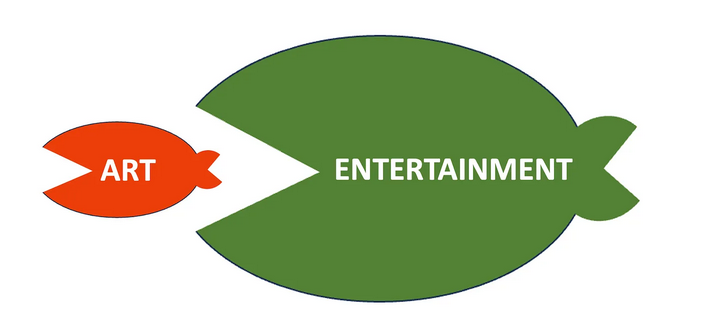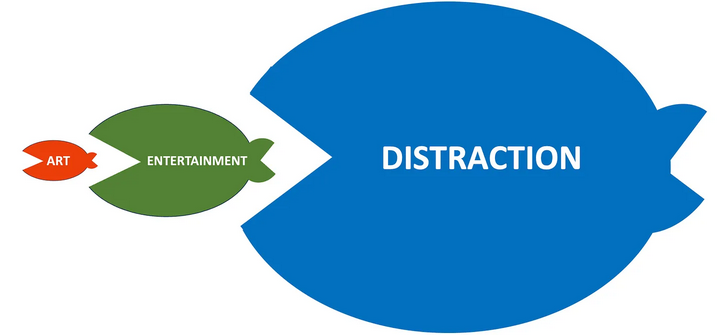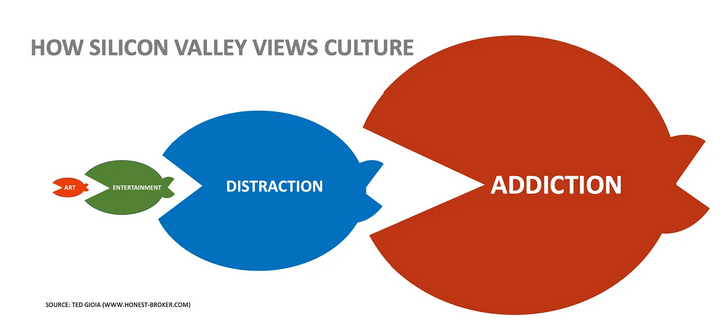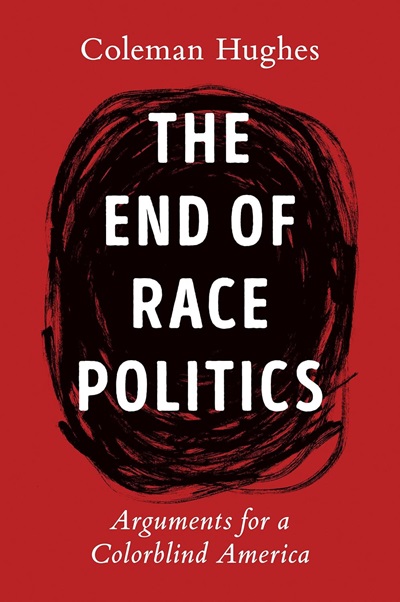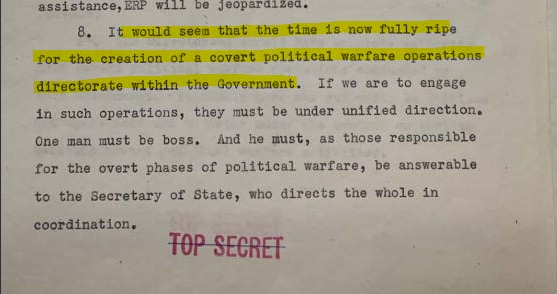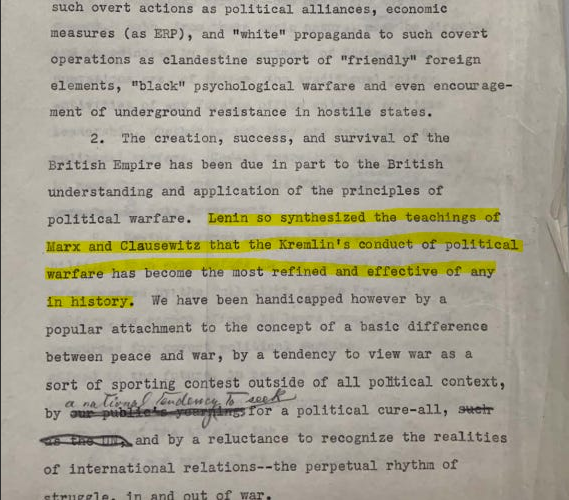seangabb
Published Feb 18, 2024This third lecture in the course deals with the rise of the Persian Empire, and the growing tensions between the Persians and the Greeks, culminating in an account of the Battle of Marathon in 490 BC.
(more…)
February 21, 2024
Greek History and Civilisation, Part 3 – The Ancient Greeks: Rising Tensions with Persia
“There’s a moral imperative to go dig out that villa … It could be the greatest archaeological treasure on earth”
In City Journal, Nicholas Wade discusses the technical side of the ongoing attempts to read one of the Herculaneum scrolls:
A computer scientist has labored for 21 years to read carbonized ancient scrolls that are too brittle to open. His efforts stand at last on the brink of unlocking a vast new vista into the world of ancient Greece and Rome.
Brent Seales, of the University of Kentucky, has developed methods for scanning scrolls with computer tomography, unwrapping them virtually with computer software, and visualizing the ink with artificial intelligence. Building on his methods, contestants recently vied for a $700,000 prize to generate readable sections of a scroll from Herculaneum, the Roman town buried in hot volcanic mud from the eruption of Vesuvius in 79 A.D.
The last 15 columns — about 5 percent—of the unwrapped scroll can now be read and are being translated by a team of classical scholars. Their work is hard, as many words are missing and many letters are too faint to be read. “I have a translation but I’m not happy with it,” says a member of the team, Richard Janko of the University of Michigan. The scholars recently spent a session debating whether a letter in the ancient Greek manuscript was an omicron or a pi.
[…]
Seales has had to overcome daunting obstacles to reach this point, not all of them technical. The Italian authorities declined to make any of the scrolls available, especially to a lone computer scientist with no standing in the field. Seales realized that he had to build a coalition of papyrologists and conservationists to acquire the necessary standing to gain access to the scrolls. He was eventually able to x-ray a Herculaneum scroll in Paris, one of six that had been given to Napoleon. To find an x-ray source powerful enough to image the scroll without heating it, he had to buy time on the Diamond particle accelerator at Harwell, England.
In 2009, his x-rays showed for the first time the internal structure of a scroll, a daunting topography of a once-flat surface tugged and twisted in every direction. Then came the task of writing software that would trace the crumpled spiral of the scroll, follow its warped path around the central axis, assign each segment to its right position on the papyrus strip, and virtually flatten the entire surface. But this prodigious labor only brought to light a more formidable problem: no letters were visible on the x-rayed surface.
Seales and his colleagues achieved their first notable success in 2016, not with Napoleon’s Herculaneum scroll but with a small, charred fragment from a synagogue at the En-Gedi excavation site on the shore of the Dead Sea. Virtually unwrapped by the Seales software, the En-Gedi scroll turned out to contain the first two chapters of Leviticus. The text was identical to that of the Masoretic text, the authoritative version of the Hebrew Bible — and, at nearly 2,000 years old, its earliest instance.
The ink used by the Hebrew scribes was presumably laden with metal, and the letters stood out clearly against their parchment background. But the Herculaneum scroll was proving far harder to read. Its ink is carbon-based and almost impossible for x-rays to distinguish from the carbonized papyrus on which it is written. The Seales team developed machine-learning programs — a type of artificial intelligence — that scanned the unrolled surface looking for patterns that might relate to letters. It was here that Seales found use for the fragments from scrolls that earlier scholars had destroyed in trying to open them. The machine-learning programs were trained to compare a fragment holding written text with an x-ray scan of the same fragment, so that from the statistical properties of the papyrus fibers they could estimate the probability of the presence of ink.
Can you make a tank disappear? The Evolution of Tank Camouflage
The Tank Museum
Published Nov 17, 2023It’s not easy to hide a tank. But over the years, military commanders have developed ways to disguise, cover and conceal the presence of their tanks from the enemy. This video is about the “art of deception” – and how, since World War One, through World War Two and into the present day, the science of tank camouflage has evolved to meet the conditions and threats of the contemporary battlefield.
00:00 | Intro
01:38 | WWI
06:26 | WW2
13:42 | Post War
19:40 | Conclusion
(more…)
QotD: Mid-century London
Two of the novels were by, respectively, Nigel Balchin and R. C. Hutchinson, writers well regarded in their time but now mostly forgotten, while the third was by Ivy Compton-Burnett, who still has her admirers. They were quite different authors, but each had an unmistakable quality of unreconstructed English national identity, such as no writer about London — where two of the novels are set — or anywhere else in the country could now convey.
It is not that foreigners could not be found in 1949 London, which was then still a port city of some importance. In Hutchinson’s book, Elephant and Castle, set largely in the East End, one of the main characters is half-Italian, and foreigners of various nationalities have walk-on parts. But they in no way affect the strongly English character of the city. Today’s London, by contrast, seems more like a dormitory for an ever-fluctuating population than a home; even much of its physical fabric has been completely denationalized by modernist architecture of a sub-Dubai quality. It is not a melting pot, for little is left to melt into; a better culinary metaphor might be a stir-fry, the ingredients remaining unblended — though, with luck, compatible.
Theodore Dalrymple, “What Seventy Years Have Wrought”, New English Review, 2019-10-26.
February 20, 2024
Rome: Part 3 – The Expansion of Roman Power
seangabb
Published Feb 18, 2024This course provides an exploration of Rome’s formative years, its rise to power in the Mediterranean, and the exceptional challenges it faced during the wars with Carthage.
Lecture 3: The Expansion of Roman Power
• The Conquest of Central Italy
• The Gallic Sack of 390 BC
• The Conquest of the Greek Cities
• Relations with Carthage
(more…)
Pronoun mandates – “It would be like being told to announce the colour of your aura every time you began a conversation”
Following up on Brendan O’Neill’s report from last week, Andrew Doyle explains why it’s essential for sensible people to resist compelled speech, which these mandatory pronoun declarations clearly are:
This is how it begins. “Why not add your pronouns to your email signature?” “Why not announce your pronouns at the beginning of meetings?” “Why not encourage your staff members to ask for pronouns in day-to-day conversation?” After all, it’s just about being compassionate and creating a more “inclusive” work environment. Only a bigot would object to that …
It’s this kind of skewed reasoning that has led to the firing of Fran Itkoff, a 90-year-old volunteer for the National Multiple Sclerosis Society in the USA, who simply expressed confusion when faced with a request that she add pronouns to her emails. “I had seen it on a couple of letters that had come in after the person’s name”, Itkoff said in an interview, “but I didn’t know what it meant”.
[…]
Like the vast majority of the population, I use pronouns to denote the biological sex of the person to whom I’m referring. And I certainly would not comply if commanded to declare my own due to my innate aversion to any form of compelled speech. The lessons of history are clear: when those in authority begin to demand the use of certain phrases, they have taken the first step on the pathway to tyranny. I do not wish to see a future in which we are forced to stand in lockstep and chant the approved slogans of the ruling class.
Of course, the declaration of pronouns is far removed from any such scenario, but the principle to me is sacrosanct. I will not be told what to say by anyone, least of all those who claim to know what is best for the good of society. Authoritarians have always couched their demands in faux-benevolence, and we have seen how gender ideologues have a particular tendency to viciousness and bullying. “Be kind … or else” is not a maxim to which I am willing to capitulate.
To ask for pronouns in the workplace is the equivalent of suggesting that employees pledge fealty to a deity they do not worship. It is a kind of test, a way to ensure that the tenets of Critical Social Justice – otherwise known as “wokeness” – are being observed. Spinoza argued that for any man to “be compelled to speak only according to the dictates of the supreme power” is a violation of his “indefeasible natural right” to be “the master of his own thoughts”. Once you agree to make statements in favour of a belief-system you do not hold, you are surrendering your agency to those who will exploit it.
While the declaration of pronouns remains a purely voluntary matter, it is fair to say that no-one’s free speech is being violated. But the consequences for non-compliance in the workplace are becoming increasingly severe. Members of staff are passed over for promotion, they are smeared as unreconstructed bigots and “transphobes”, and eventually shunned and isolated. I have written before about friends of mine in the acting profession who feel uncomfortable in stating pronouns at the beginning of rehearsals, but know that they are unlikely to be recast if they refuse. This may not be compulsion, but it is coercion.
Belt-fed Madsen LMG: When the Weird Get Weirder
Forgotten Weapons
Published Nov 15, 2023First produced in 1902, the Madsen was one of the first practical light machine guns, and it remained in production for nearly 5 decades. The Madsen system is a rather unusual recoil-operated mechanism with a tilting bolt and a remarkably short receiver. The most unusual variation on the system was the belt-fed, high rate-of-fire pattern developed for aircraft use. This program was initiated by the Danish Air Force in the mid 1920s, and several different patterns were built by the time World War Two erupted.
The model here was actually a pattern that was under production for Hungary when German forces occupied Denmark. Taking over the factory, they continued the production and the guns went to the Luftwaffe for airfield defensive use.
In order to use disintegrating links instead of box magazines, some very odd modifications had to be made to the Madsen. One set of feed packs are actually built into the belt box itself, and the gun cannot function without the box attached. The only feasible path for empty link ejection is directly upwards, and so a horseshoe-shaped link chute was attached to the top cover, guiding links up over the gun and dropping them out the right side of the receiver. Very weird!
While several thousand of these were made under German occupation, very few survive today and they are extremely rare on the US registry.
(more…)
QotD: Tariffs and protectionism
The economic case against protectionism is practically invincible. While theoretical curiosities can be described in which an import tariff (or an export subsidy) yields to the people of the home country net economic gains, the conditions that must prevail for these possibilities to have practical merit are absurdly unrealistic.
Yet in their efforts to justify punitive taxes on fellow citizens’ purchases of imports, protectionists regularly trot out these theoretical curiosities. And none is more frequently paraded in public than is the assertion that high tariffs imposed by the home government today will pressure foreign governments to lower their tariffs tomorrow, with the final result being freer trade worldwide.
“Our tariffs are the best means for making trade freer and bringing about what Adam Smith and all free traders have desired: maximum possible expansion of the international division of labor!” protectionists declare with straight faces.
This protectionist apology for tariffs is as believable as is the apology often offered by today’s campus radicals for speech codes and the harassment of certain speakers: “Our insistence on silencing conservatives and libertarians is actually a means of promoting campus diversity and inclusion!”
Both declarations are Orwellian.
Don Boudreaux, “Is Trump’s Ultimate Goal Global Free Trade?”, Catallaxy Files, 2019-06-11.
February 19, 2024
The heirs of Walter Ulbricht
Chris Bray linked to this fascinating — and depressing — report on the German government’s plans to crack down on “extreme” “right-wing” groups and individuals … to “protect our democracy”, of course:
After Germany’s defeat in 1945, Walter Ulbricht returned from exile in Moscow to become one of the founding politicians of the DDR. The new state, he said, “must look democratic, but we must have everything under control“. It has been 80 years since Ulbricht spoke those words, and while the DDR has faded away, their spirit lives on in the political establishment of the Federal Republic. Our present rulers are doing everything in their power to re-establish pseudodemocracy in the West. This is not a mere eugyppius exaggeration, and it is not sensationalism for internet clicks. It is what our politicians themselves are saying.
As in the DDR, we hear that these antidemocratic measures are necessary to protect us from the threat posed by the right. The truth is much more mundane: Germany has one of the oldest party systems in Europe. As has already happened in many other countries, this post-war establishment is coming apart. While our neighbours have endured the rise of new parties and political structures with some measure of equanimity, our cartel politicians in Germany are terrified of losing power, and they will use all the tools at their disposal to keep hold of it – up to and including the suspension of democracy itself.
Alternative für Deutschland find themselves in the targets of our nominally democratic priesthood not because they are extremely right-wing, or racist, or xenophobic or anything like that. Politically, they’re hardly different from the CDU of the 1980s. Their real crime is having achieved enough strength to threaten the establishment ecosystem. The stronger AfD become, the harder it will prove for the reigning parties to form anti-AfD coalitions. [my emphasis, NR] Some of these parties, like the FDP, seem destined to disappear entirely; others, like the SPD, fear a future of permanent irrelevance. The once-dominant centre-right CDU, meanwhile, will find itself unable to form workable governments with partners on the left, and thus without any excuse not to enact the mild nationalism that a clear majority of voters demand, and that is so deeply out of fashion with our globalist rulers.
This is the purpose of the unceasing, astroturfed agitation “against the right” that the establishment have visited upon Germany for over a month now. The protests have not worked to destroy support for the AfD, so now they are being repurposed as a license to take enforcement action against “right-wing extremism”. Interior Minister Nancy Faeser (SPD) said at a press conference on Tuesday that the protests have given her both “encouragement” and a “mandate” to proceed against the right. “This really is a very positive signal,” she said, “because it is about defending our open society against its enemies. As a democracy on the defence, we must stand up to the extremists.”
Faeser spoke these words in the course of announcing a range of measures via which she hopes to combat “right-wing extremism”. These are also outlined in a 16-page Interior Ministry paper on “Resolutely Combating Right-Wing Extremism: Using the Instruments of Defensive Democracy“. Here, it is important to note that Faeser is among the most unpopular politicians in all of Germany. Last year she suffered a humiliating defeat in her effort to become Minister President of Hessen, and 60% of Germans view her unfavourably. That is powerful motivation to bring German democracy back under control. Her “package of measures” to combat “the right” are some of the most openly antidemocratic, dictatorial policies I have ever seen any Western politician articulate. In other nations these kinds of things are surely said behind closed doors, but in Germany they are printed in all the major papers. You can only imagine what these people contemplate in secret. [again, my emphasis. We already know that at least one Canadian government minister wanted to send the tanks in against the Freedom Convoy in 2022 – NR]
Faeser and her fellow political enforcers have such a wide-ranging, fluid understanding of what “right-wing extremism” constitutes, that the label can be deployed against basically anybody. The Interior Ministry paper claims that “The aim of right-wing extremists is to abolish liberal democracy and reshape our society according to their nationalist, racist and anti-pluralist ideas”. You might think, “well, that’s okay then, I’m a pluralist liberal,” but that would be as naive as thinking you were safe from the Stasi because you were not a fascist. The same paper proceeds to complain that “the extremist … New Right … aims to discuss topics and use terms that give their inhuman plans a harmless appearance”. Translated from democratese: “There are people out there who are not saying anything illegal but they have made themselves inconvenient anyway”. The president of the Federal Office for the Protection of the Constitution, Thomas Haldenwang, likewise spoke at the press conference of the tendency of “right-wing extremists” to “dress up and camouflage themselves”. They must “be unmasked and exposed … [as] enemies of our democracy”.
This construction of “right-wing extremism” as a cryptic, hidden quality that requires unveiling by the political police is unimaginably dangerous. You are never safe from a regime that thinks this way, because what you actually say, do or even believe doesn’t matter. You are guilty of “right-wing extremism” if Haldenwang’s office thinks you are. This flexibility is important, because the establishment are not actually interested in driving out zombie National Socialists. They want to neuter the political opposition, whatever its form or programme.
The End of Race Politics by Coleman Hughes
Given how far race relations in the United States (and in Canada) have disintegrated since 2009, it’s almost surprising to find someone taking up arms against the race preferences and active discrimination being implemented by governments, organizations, and companies across North America, but Coleman Hughes’ first book does exactly that:
… almost as soon as the 1964 breakthrough in overcoming racial classifications took hold, it was abandoned. In a perverse echo of the past, sanctioned preferential treatment for blacks slowly began to replace sanctioned preferential treatment for whites. Set-asides, quotas, affirmative action all proliferated, all rooted in the old, crude racial classifications. The notion that affirmative action was a temporary adjustment, to be retired in a couple of decades at most, gradually disappeared. In fact, it was extended to every other racial or sexual minority and to women. Even as women and many blacks and other minorities triumphed in the economy and mainstream culture, they were nonetheless deemed eternal victims of pervasive misogyny and racism.
The more tangible the success for women and minorities, the more abstract the notion of “systemic oppression” became. Critical race theorists argued that color-blindness itself was a form of racism; and that all white people, consciously or unconsciously, could not help but be perpetuators of racial hate, whether they intended to or not. That’s how we arrived at a moment when Jon Stewart decided he’d tackle the subject of racial inequality in America by hosting a show called “The Problem With White People”, and when “The 1619 Project” actually argued that the American Revolution was not driven by a desire to be free from Britain but to retain slavery, which Britain threatened.
The poignancy of Coleman Hughes’ new book, The End of Race Politics, lies therefore in the tenacity of his faith in the spirit of 1964. “Color-blindness” is not the best description of this, because of course we continue to see others’ race, just as we will always see someone’s sex. No, as Hughes explains: “To advocate colorblindness is to endorse an ethical principle: we should treat people without regard to race, both in our public policy and private lives”.
That’s a principle the vast majority of Americans, black and white and everything else, support. It was the core principle for Frederick Douglass, Zora Neale Hurston, Martin Luther King Jr, and Bayard Rustin. “If I have advocated the cause of the colored people, it is not because I am a negro, but because I am a man,” insisted Douglass. Henry Highland Garnet — the first African-American to speak in Congress after the passage of the Thirteenth Amendment — even apologized for speaking of various different races, “when in fact there is but one race, as there was but one Adam”.
Fast forward to 2015, when the University of California called the phrase “There is only one race, the human race” a “micro-aggression”; or 2020, when the phrase “All Lives Matter” was deemed evidence of “anti-blackness”. The 21st Century, the brief era of color-blindness behind us, reached back to the 19th to insist that race defines us at our core, can never be overcome, and marks us all either an oppressor or a victim. The left, including the Democratic Party, has now adopted this worldview, along with a legal regime to actively discriminate against some races and not others: “equity”. That’s why Hughes cuts to the chase and calls these reactionaries in progressive clothing “neoracists”. They are. What else would one call them?
They are race-obsessed. They view any human interaction as a racial power-struggle, and compound it with any number of further “intersectional” power-struggles. They do not see two unique individuals with unique life experiences interacting in a free society. They see group identity as determinative everywhere; and therefore want to intervene everywhere, to discriminate against whites and successful non-whites in favor of unsuccessful non-whites. Individual rights? They come second to group identity.
[…]
One in five “black” Americans are immigrants or descended from them, Hughes observes. Only 30 percent of Asian-Americans think of themselves as “Asian” at all, rather as a member of a specific group — like Korean or Indian. Within the Asian box, you also have huge diversity: “In 2015, 72 percent of Indians over 25 had at least a bachelors degree. yet only 9 percent of Bhutanese did.” Ditto “Hispanic”. Any formula that conflates Cubans with Mexicans and Colombians is absurd. And don’t get me started on the LGBTQIA+ bullshit.
The woke also have a staggeringly crude understanding of power. Economic power? No doubt many whites have a huge edge in accumulated wealth in America; but the cultural power of African-Americans is global in reach and far outweighs the cultural clout of, say, white evangelicals or conservatives at home. Political power? Blacks, who are about 14 percent of population, are represented proportionally in the House — covering 29 states — and can claim the last two-term president, the current vice president, the House minority leader, the secretary of defense, the chairman of the Joint Chiefs, the mayors of the four most populous cities last year, and more than a fifth of SCOTUS.
For the neoracists, all racial disparities are entirely explained by “systemic racism”. But this obviously obscures the complexity of American society. “Culture” is a loaded and complex term, but it sure matters. A child with two engaged parents in the home has far more chances to succeed than a kid who barely sees his dad. Now look at the difference between family structure among many Asian-American groups and that of black Americans. And how can one blame “white supremacy” for the constant murderous mayhem of urban black spaces? Only by removing from young black men any concept of their own agency and humanity.
The CIA’s covert operations … as inspired by Vladimir Lenin
Along with most people who’ve been paying attention to history since the start of the Cold War, I hold the CIA in dubious regard. They seem to have been involved in so many underhanded escapades in countries around the world — certainly by reputation, if not in reality — that they stand almost in direct opposition to how most Americans liked to think of their country. Jon Miltimore thinks that among their inspirations was the founder of the Soviet Union himself:
I bring all of this up because I recently came across an old document of some significance that I’d never heard of before titled, “The Inauguration of Organized Political Warfare“.
It was authored by George Kennan, the State Department Policy Planning Director who’d go on to be a successful US diplomat, for the National Security Council (which governed the CIA), and the document explained how the US government had to mobilize national resources “for covert political warfare” to combat the Soviet Union.
Kennan was not, in my opinion, a bad man. He had good instincts and sound motives, at least compared to others in the US intelligence apparatus. He was an early opponent of the Vietnam War and later was one of the first diplomatic leaders to warn against the US policy of expanding NATO up to Russia’s doorstep, something he predicted would be “the most fateful error of American policy in the entire post-cold-war era”.
That said, it’s clear that Kennan was not appalled by the Soviet Union’s use of covert political warfare. He was impressed by it.
“Lenin so synthesized the teachings of Marx and Clausewitz that the Kremlin’s conduct of political warfare has become the most refined and effective of any in history,” Kennan wrote in the document.
We have been handicapped however by a popular attachment to the concept of a basic difference between peace and war, by a tendency to view war as a sort of sporting context outside of all political context, by a national tendency to seek for a political cure-all, and by a reluctance to recognize the realities of international relations — the perpetual rhythm of [struggle, in and out of war].
The document is fascinating because it appears to mark the genesis of the US government’s first formal steps into the world of political warfare — a well-documented history that includes toppling governments, assassinating world leaders, tipping elections, and torturing enemies.
All of these efforts, of course, initially targeted external parties and countries to serve “the national interest”.
This is no longer the case. The CIA, NSA, and other intelligence agencies no longer restrict their covert political warfare to foreign states, and I’m not talking about just Operation Mockingbird and other domestic propaganda efforts.
The CIA is clearly putting its thumb on the scales of US elections in ways that should terrify all Americans.
Justin Hayward performs “Forever Autumn” after telling the story behind it
RockEm Live Music
Published Jul 20, 2023The Justin Hayward Band performs “Forever Autumn” at the Plaza Live in Orlando, Florida on February 3, 2023. “Forever Autumn” was written by Jeff Wayne, Gary Anthony Osbourne and Paul Anthony Vigrass, and Justin explains how he got involved in the project at the beginning of this video.
Justin Hayward – Lead Vocals & Guitar
Mike Dawes – Guitars
Julie Ragins – Keyboards & Vocals
Karmen Gould – Flute, Percussion & Vocals
QotD: Cleopatra VII Philopator
This week on the blog we’re going to talk about Cleopatra or to be more specific, we’re going to talk about Cleopatra VII Philopator, who is the only Cleopatra you’ve likely ever heard of, but that “seven” after her name should signal that she’s not the only Cleopatra.1 One of the trends in scholarship over the years towards larger than life ancient historical figures – Caesar, Alexander, Octavian, etc. – has been attempts to demystify them, stripping away centuries of caked-on reception, assumptions and imitation to ask more directly: who was this person, what did they do and do we value those sorts of things?2
Cleopatra, of course, has all of that reception layered on too. In antiquity and indeed until the modern era, she was one of the great villains of history, the licentious, wicked foreign queen of Octavian’s propaganda. More recently there has been an effort to reinvent her as an icon of modern values, perhaps most visible lately in Netflix’ recent (quite poorly received) documentary series. A lot of both efforts rely on reading into gaps in the source material. What I want to do here instead is to try to strip some of that away, to de-mystify Cleopatra and set out some of what we know and what we don’t know about her, with particular reference to the question I find most interesting: was Cleopatra actually a good or capable ruler?
Now a lot of the debate sparked by that Netflix series focused on what I find the rather uninteresting (but quite complicated) question of Cleopatra’s heritage or parentage or – heaven help us – her “race”. But I want to address this problem too, not because I care about the result but because I am deeply bothered by how confidently the result gets asserted by all sides and how swiftly those confident assertions are mobilized into categories that just aren’t very meaningful for understanding Cleopatra. To be frank, Cleopatra’s heritage should be a niche question debated in the pages of the Journal of Juristic Papyrology by scholars squinting at inscriptions and papyri, looking to make minor alterations in the prosopography of the Ptolemaic dynasty, both because it is highly technical and uncertain, but also because it isn’t an issue of central importance. So we’ll get that out of the way first in this essay and then get to my main point, which is this:
Cleopatra was, I’d argue, at best a mediocre ruler, whose ambitious and self-interested gambles mostly failed, to the ruin of herself and her kingdom. This is not to say Cleopatra was a weak or ineffective person; she was very obviously highly intelligent, learned, a virtuoso linguist, and a famously effective speaker. But one can be all of those things and not be a wise or skillful ruler, and I tend to view Cleopatra in that light.
Now I want to note the spirit in which I offer this essay. This is not a take-down of the Netflix Queen Cleopatra documentary (though it well deserves one and has received several; it is quite bad) nor a take-down of other scholars’ work on Cleopatra. This is simply my “take” on her reign. There’s enough we don’t know or barely know that another scholar, viewing from another angle, might well come away with a different conclusion, viewing Cleopatra in a more positive light. This is, to a degree, a response to some of the more recent public hagiography on Cleopatra, which I think air-brushes her failures and sometimes tries a bit too hard to read virtues into gaps in the evidence. But they are generally gaps in the evidence and in a situation where we are all to a degree making informed guesses, I am hardly going to trash someone who makes a perfectly plausible but somewhat differently informed guess. In history there are often situations where there is no right answer – meaning no answer we know to be true – but many wrong answers – answers we know to be false. I don’t claim to have the right answer, but I am frustrated by seeing so many very certain wrong answers floating around the public.
Before we dive in briefly to the boring question of Cleopatra’s parentage before the much more interesting question of her conduct as a ruler, we need to be clear about the difficult nature of the sources for Cleopatra and her reign. Fundamentally we may divide these sources into two groups: there are inscriptions, coins and papyrus records from Egypt which mention Cleopatra (and one she wrote on!) but, as such evidence is wont to be, [they] are often incomplete or provided only limited information. And then there are the literary sources, which are uniformly without exception hostile to Cleopatra. And I mean extremely hostile to Cleopatra, filled with wrath and invective. At no point, anywhere in the literary sources does Cleopatra get within a country mile of a fair shake and I am saying that as someone who thinks she wasn’t very good at her job.
The problem here is that Cleopatra was the target of Octavian’s PR campaign, as it were, in the run up to his war with Marcus Antonius (Marc Antony; I’m going to call him Marcus Antonius here), because as a foreign queen – an intersecting triad of concepts (foreignness, monarchy and women in power) which all offended Roman sensibilities – she was effectively the perfect target for a campaign aimed at winning over the populace of Italy, which was, it turns out, the most valuable military resource in the Mediterranean.3 That picture – the foreign queen corrupting the morals of good Romans with her decadence – rightly or wrongly ends up coloring all of the subsequent accounts. Of course that in turn effects the reliability of all of our literary sources and thus we must tread carefully.
Bret Devereaux, “Collections: On the Reign of Cleopatra”, A Collection of Unmitigated Pedantry, 2023-05-26.
1. Or even just the seventh!
2. This is not to diminish the value of reception studies that trace the meaning a figure – or the memory of a figure – had over time. That’s a valuable but different lens of study.
3. It’s not all Octavian, mind. Cicero’s impression of Cleopatra was also sharply negative, for many of the same reasons: Cicero was hardly likely to be affable to a foreign queen who was an ally of Julius Caesar.
February 18, 2024
Indigo’s very bad third quarter may not be all bad news
In the latest SHuSH newsletter, Ken Whyte discusses Indigo’s latest earnings report and points out a few things that may indicate better things to come if the firm continues its “refocus” on bookselling as its primary line of business:
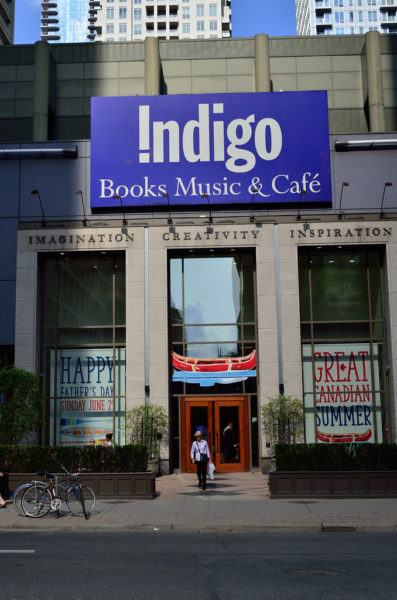
“Indigo Books and Music” by Open Grid Scheduler / Grid Engine is licensed under CC0 1.0
Indigo Books & Music last week reported its third quarter financial results, covering the months of October to December 2023. Because retailers make most of their money in advance of the holiday season, Indigo’s third quarter is its most important quarter — the one that makes or breaks the year. It wasn’t good.
Revenue for the three-month period was $371 million compared to $423 million in the same period last year. Net income for the quarter was $10 million compared to $34.3 million in the prior year. Given that the company had already lost more than $40 million in the first two quarters of the year and that its fourth quarter is traditionally soft, Indigo is looking at another annus horribilis come its March 31 year end.
After every quarter, Indigo’s CEO and CFO discuss the company’s results and take questions from shareholders on a conference call. I tuned in to this quarter’s call to hear company founder Heather Reisman, recently returned as CEO, admit that it was a “challenging” time for the business. She attributed the poor performance to the ongoing repercussions of last winter’s ransomware attack, overbuys of the wrong kind of general merchandise (non-book items such as dildos, blankets, and cheeseboards), and “the premature launch of our new e-commerce platform”.
Amid all the ugly results, I heard a few things that might strike anyone interested in the Canadian book publishing industry as positive.
You’ll remember that Heather spent a few months in the doghouse last summer after announcing a terrible fiscal 2023. She retired and then un-retired in September and, on her return, pledged to take SHuSH‘s advice, clear her shelves of the dildos and cheeseboards that represent half of Indigo’s business, and recommit to selling books. I wasn’t sure if she meant it or just wanted the business community to know she was up on SHuSH. Apparently she meant it.
On the call, she spoke at length of her “transformation plan” to “connect meaningfully with book lovers”. She apparently spent the autumn shrinking her general merchandise inventory — much of the poor financial performance was due to unloading it at steep discounts. In fact, if you back out the aggressive discounting of unwanted crap, Indigo’s recent holiday season hit a slightly higher level of profitability than the prior year. Heather meanwhile reinvested in book inventory, “consistent with our long-term brand mission to inspire reading”.
I was heartened by this, more so when it emerged on the call that there are sound business reasons for recommitting to books. The printed word turned out to be Indigo’s most resilient retail channel last year. It was down only 8 percent. General merchandise was down 18.5 percent. Heather thinks general merchandise was hit especially hard because the guy she’d hired to run the place in her absence didn’t have the right assortment in stores at Christmas. That may be true, but 18.5 percent is still a big drop.
The 8 percent decline in books looks okay in relation to the rest of Canada’s retail economy. Canadian Tire just announced its results from the last quarter of 2023 and revenue was down 17 percent across the board. That suggests books more than held their own in a weak environment.
It seems reasonable to expect that if Indigo follows through on Heather’s promise and refocuses its brand and its marketing efforts and its in-store experience on books and reading, the business has a future. It will take time, as she repeatedly reminded listeners on the call. There’s still a canopy bed in the middle of the company’s flagship bookstore in Ottawa.


